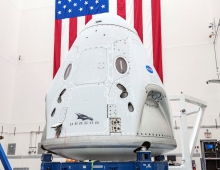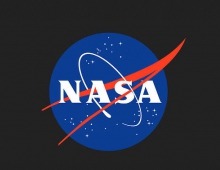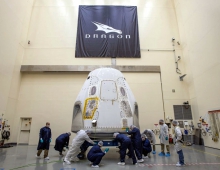
NASA Taps Blue Origin, Boeing, Lockheed Martin, SpaceX and More American Companies to Advance Human Lunar Landers
NASA has selected 11 companies to conduct studies and produce prototypes of human landers for its Artemis lunar exploration program.
This effort will help put American astronauts — the first woman and next man — on the Moon’s south pole by 2024 and establish sustainable missions by 2028.
The selected companies will study and/or develop prototypes during the next six months that reduce schedule risk for the descent, transfer, and refueling elements of a potential human landing system.
NASA’s proposed plan is to transport astronauts in a human landing system that includes a transfer element for the journey from the lunar Gateway - a small spaceship in orbit around the Moon - to low-lunar orbit, a descent element to carry them to the surface, and an ascent element to return to them to the Gateway. The agency also is looking at refueling capabilities to make these systems reusable.
The total award amount for all companies is $45.5 million. Nasa's
Next Space Technologies for Exploration Partnerships (NextSTEP) is a public/private partnership program, so companies are required to contribute at least 20% of the total project cost.
The awardees are:
- Aerojet Rocketdyne – Canoga Park, California - One transfer vehicle study
- Blue Origin – Kent, Washington - One descent element study, one transfer vehicle study, and one transfer vehicle prototype
- Boeing – Houston - One descent element study, two descent element prototypes, one transfer vehicle study, one transfer vehicle prototype, one refueling element study, and one refueling element prototype
- Dynetics – Huntsville, Alabama - One descent element study and five descent element prototypes
- Lockheed Martin – Littleton, Colorado - One descent element study, four descent element prototypes, one transfer vehicle study, and one refueling element study
- Masten Space Systems – Mojave, California - One descent element prototype
- Northrop Grumman Innovation Systems – Dulles, Virginia - One descent element study, four descent element prototypes, one refueling element study, and one refueling element prototype
- OrbitBeyond – Edison, New Jersey - Two refueling element prototypes
- Sierra Nevada Corporation, Louisville, Colorado, and Madison, Wisconsin - One descent element study, one descent element prototype, one transfer vehicle study, one transfer vehicle prototype, and one refueling element study
- SpaceX – Hawthorne, California - One descent element study
- SSL – Palo Alto, California - One refueling element study and one refueling element prototype
To expedite the work, NASA is invoking undefinitized contract actions, which allow the agency to authorize partners to start a portion of the work, while negotiations toward contract award continue in parallel.
In April, NASA issued a pre-solicitation of its intention to partner with American companies on the development of an integrated lander. The formal solicitation, to be issued this summer, will provide the requirements for a 2024 human landing, and leave it to U.S. industry to propose innovative concepts, hardware development and integration.
Some days ago, Nasa submitted an amendment to the fiscal 2020 budget that would add another $1.6 billion to the $10.7 billion budget set aside to take the first woman and the next man to the moon by 2024. Called the Artemis exploration project, the mission is meant to carry American astronauts to the moon's south pole in five years' time and to establish our presence on Earth's natural satellite by 2028.





















